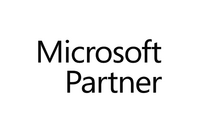End of Life: Update, migrate or extend SQL Server 2012?
As of July 12, 2022, Microsoft no longer provides support for SQL Server 2012, which can make continued operation a security and compliance risk. However, there are various options available to solve this problem.
#Microsoft #IT Architecture
Those who are not yet ready for a longer-term solution have the option of subscribing to Extended Security Updates (ESUs) for SQL Server 2012[i]. These updates are available now and can be ordered from Microsoft or UMB. Critical security updates are available for up to three years after the official end of support date – that is until July 2025. Customers who migrate their SQL Server 2012 and Windows Server 2012 to Azure will receive the Extended Security Updates free of charge during these three years. This includes all Azure targets such as Azure Virtual Machines (IaaS), PaaS solutions such as Azure SQL Managed Instanced or Azure SQL Databases, Azure Dedicated Host, Azure VMware Solution and the entire Azure Stack HCI portfolio.
Continued operation without support is not recommended
As significant security risks can arise, the continued operation of SQL 2012 after the end of Microsoft's extended support is not recommended - also because new applications should not be operated on outdated SQL servers. For companies with ISO certification or those that want to remain GDPR-compliant, upgrading to a current version of SQL Server is mandatory. This brings various distinct and long-term advantages[ii]. By upgrading their server platforms to a newer version of SQL Server, organizations can benefit from increased performance, security, support and access to advanced analytics.
New versions, new features
Newer versions of SQL Server can process more data, more complex queries and more simultaneous users with less load on the server. To give an example, the In-Memory OLTP (Online Transaction Processing) feature introduced with SQL Server 2014 has significantly improved transaction performance. Microsoft has introduced more robust security measures with each SQL Server version. Features such as always encrypted data content, row-level security and dynamic data masking provide more granular control over who can access what data and how much the end user is allowed to see. Access permissions for data to be viewed can be set for different end users such as system administrators, database administrators or application administrators.
Ten years of support
For each new SQL Server version, Microsoft offers 10 years of support, which is divided into two phases: Mainstream (feature, performance, scalability and security updates) and Extended (security updates only). Of course, each new version of SQL Server introduces new features that are not available in older versions. Upgrading to a newer version of SQL Server therefore offers you the latest technology, control over features and scalability, a familiar environment, broad applicability and low risk for database applications. However, this approach requires the largest upfront investment and the greatest ongoing administrative effort. It is also worth mentioning that mainstream support for SQL 2014 with Service Pack 3 will expire in July 2024.
(For more detailed information, guidance and tools to plan and automate your upgrade or migration, visit the end of support page for SQL Server 2012/2014 on Microsoft Learn[iii].)
Before you make a decision, it is always worth analyzing your individual situation in order to implement your future solution in such a way that it will meet your specific needs. As a Microsoft Solutions Partner, we at UMB will provide you with competent and comprehensive support, regardless of which option you ultimately choose. Please contact us.
[i]Extended Security Updates FAQ - SQL Server | Microsoft Learn
[ii]Upgrading SQL Server–Top Five Upgrade Reasons
[iii]End of support options - SQL Server | Microsoft Learn



